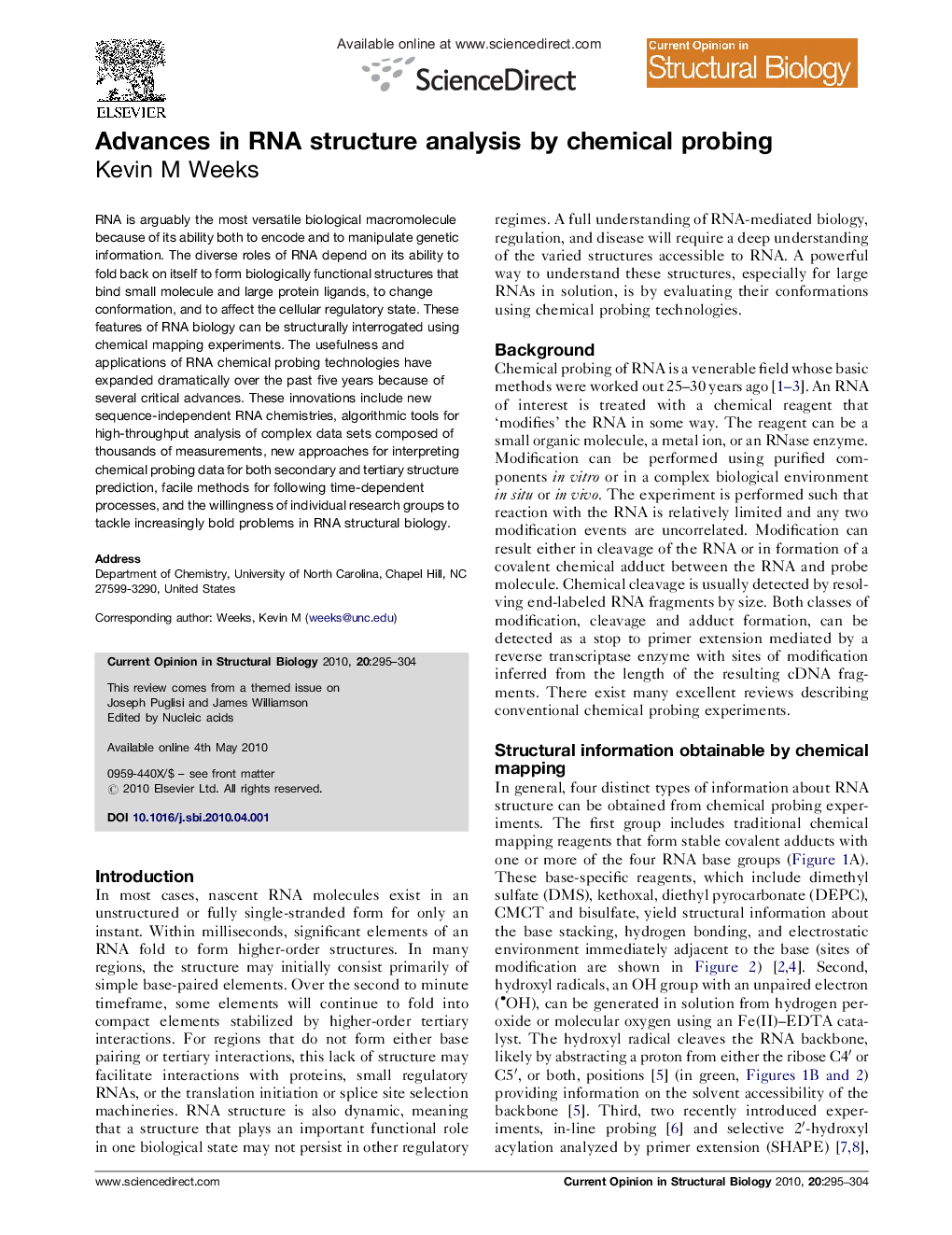| Article ID | Journal | Published Year | Pages | File Type |
|---|---|---|---|---|
| 1979687 | Current Opinion in Structural Biology | 2010 | 10 Pages |
RNA is arguably the most versatile biological macromolecule because of its ability both to encode and to manipulate genetic information. The diverse roles of RNA depend on its ability to fold back on itself to form biologically functional structures that bind small molecule and large protein ligands, to change conformation, and to affect the cellular regulatory state. These features of RNA biology can be structurally interrogated using chemical mapping experiments. The usefulness and applications of RNA chemical probing technologies have expanded dramatically over the past five years because of several critical advances. These innovations include new sequence-independent RNA chemistries, algorithmic tools for high-throughput analysis of complex data sets composed of thousands of measurements, new approaches for interpreting chemical probing data for both secondary and tertiary structure prediction, facile methods for following time-dependent processes, and the willingness of individual research groups to tackle increasingly bold problems in RNA structural biology.
